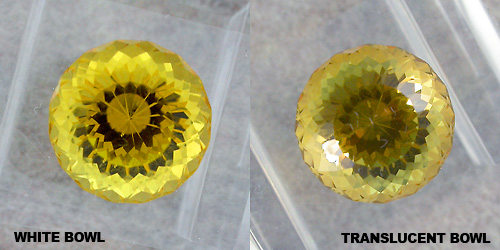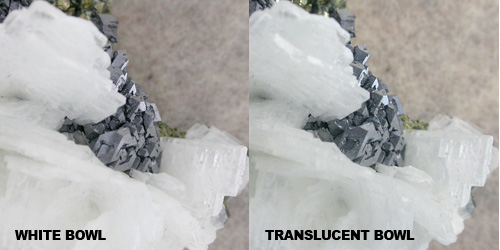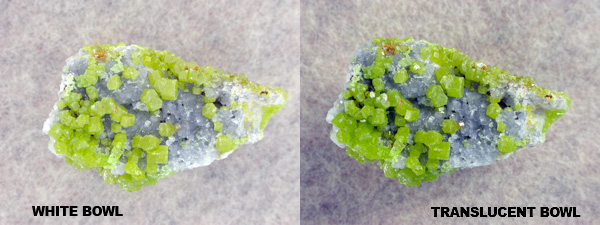|
Some Bowl Results
|
 |
Gemstones show good color saturation when photographed under the bowl-type systems, but fail to show proper highlights or "sparkle." This lighting is good for photographing inclusions within a stone as there are fewer surface reflection. Rutillated materials show up very well. | |
 |
The lighting can be useful to show facet designs as many more facets show up without strong highlighting. This portuguese cut has man rows of facets that appear in circular patterns in this even illumination. They tend to disappear into hundreds of specular highlights when the stone is lighted directly from the front. | |
 The The |
White minerals and metallic minerals take good quality photographs using the bowl. As might be expected, the bowls help reduce random reflections and hot spots.
Shooting a metallic mineral like pyrite or some forms of hematite can be real challenge if the secondary minerals are predominantly white. The bowl illumination provides a way to avoid the strongest specular highlights and thus smooth out the two reflective, yet different, surfaces. |
|
 |
Colored minerals can be photographed under the bowls, but the lack of strong shadows reduces the contrast of light and dark areas. Notice the more defined shadows in the translucent bowl.
The disadvantage to the even illumination is a feeling of compression in the mineral sample. There is not the same degree of "3D" effect as there are few high contrast areas. The minerals look flatter than actually are. |
|